Are you looking to establish a fruitful partnership with the media? A media collaboration agreement can set the stage for a successful relationship, defining the roles, responsibilities, and expectations of both parties involved. This essential document not only ensures transparency but also enhances the potential for impactful storytelling and shared success. Let's dive deeper into the key elements of a media collaboration agreement and how it can benefit your organization!
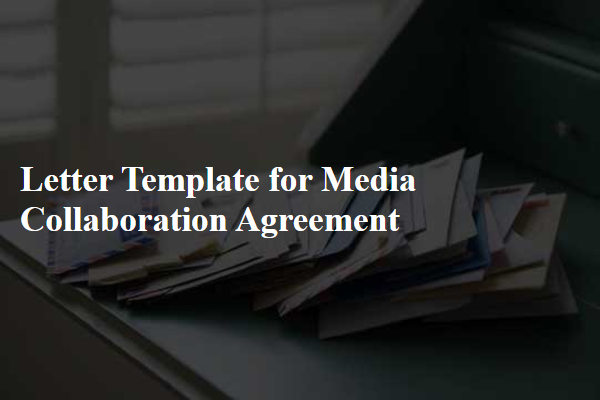
Purpose and Scope of Collaboration
The purpose of the media collaboration agreement is to establish a strategic partnership between two entities, focusing on joint promotional efforts that benefit both parties. Detailed objectives of the collaboration include co-producing content, leveraging each other's audience reach for greater visibility, and facilitating cross-promotion through shared platforms. The scope encompasses various media formats such as video, social media posts, and written articles, aimed at enhancing brand awareness and audience engagement. Both parties will define specific roles, responsibilities, and timelines for each collaborative initiative, ensuring clarity and accountability throughout the collaboration process. This agreement serves as a foundation for ongoing communication, evaluation of shared goals, and potential expansion of the partnership in future projects.
Roles and Responsibilities
This media collaboration agreement outlines key roles and responsibilities for participating parties in a joint project. The primary role of the content creator involves producing high-quality articles, videos, or graphics related to the campaign's theme, ensuring alignment with brand guidelines and deadlines. The marketing team is responsible for strategizing and executing promotional efforts across various digital platforms such as social media, email newsletters, and websites, effectively reaching the target audience of 18-35-year-old consumers interested in lifestyle enhancements. Legal compliance, including usage rights for all media produced, will be managed by the legal department, safeguarding against copyright issues. The project manager oversees coordination and communication between parties, guaranteeing that milestones are met while adhering to the agreed timeline. Regular progress evaluation meetings will be scheduled bi-weekly to ensure transparency and address any potential challenges promptly, fostering a collaborative environment. Each entity must maintain a log of all contributions and efforts made to ensure clear accountability and attribution throughout the collaboration.
Intellectual Property Rights
A media collaboration agreement often addresses critical aspects of intellectual property rights, specifically delineating ownership and usage of creative works and materials produced during joint projects. Parties involved, such as a digital marketing agency and a content creator, must establish clear guidelines on copyright ownership, attribution, and any licensing agreements that may apply to videos, articles, and graphics created collaboratively. The agreement should specify key terms, such as duration of ownership rights (typically measured in years), territorial scope (which might encompass global or regional usage), and provisions for the management of any disputes related to intellectual property claims. Additionally, confidentiality clauses can protect proprietary information shared throughout the collaboration, ensuring that trade secrets or unreleased content remain secure. To enhance clarity, incorporating examples of specific works (e.g., a documentary film or social media campaign) and detailing the contributions of each party can provide a comprehensive framework for collaboration while safeguarding intellectual property interests.
Confidentiality and Privacy
Confidentiality and privacy are crucial elements in media collaboration agreements. These agreements typically outline the responsibilities of each party regarding the protection of sensitive information shared during the partnership. Key components often include definitions of confidential information, obligations to maintain secrecy, duration of confidentiality (often spanning several years post-collaboration), and exceptions to confidentiality clauses (e.g., information already publicly available, disclosures required by law). Specific provisions may address how information should be handled, such as secure storage methods and limitations on access to authorized personnel only. Additionally, consequences for breaches of confidentiality are usually defined, which can include legal ramifications and monetary damages. Effective confidentiality agreements promote trust and safeguard proprietary knowledge vital for competitive advantage in the media industry.
Termination and Amendments
Termination of a media collaboration agreement may be executed under specific circumstances, such as unsatisfactory performance, breach of contract, or mutual consent. The notice period, typically 30 days, allows parties to address concerns before termination. Amendments to the agreement should be documented in writing, ensuring both parties agree to changes in terms, including responsibilities, deliverables, or timelines. Clear definitions of dispute resolution methods, such as mediation or arbitration, should be included to address potential conflicts that may arise during the collaboration. Legal compliance, including adherence to copyright laws and data protection regulations, remains critical throughout the agreement's lifespan.


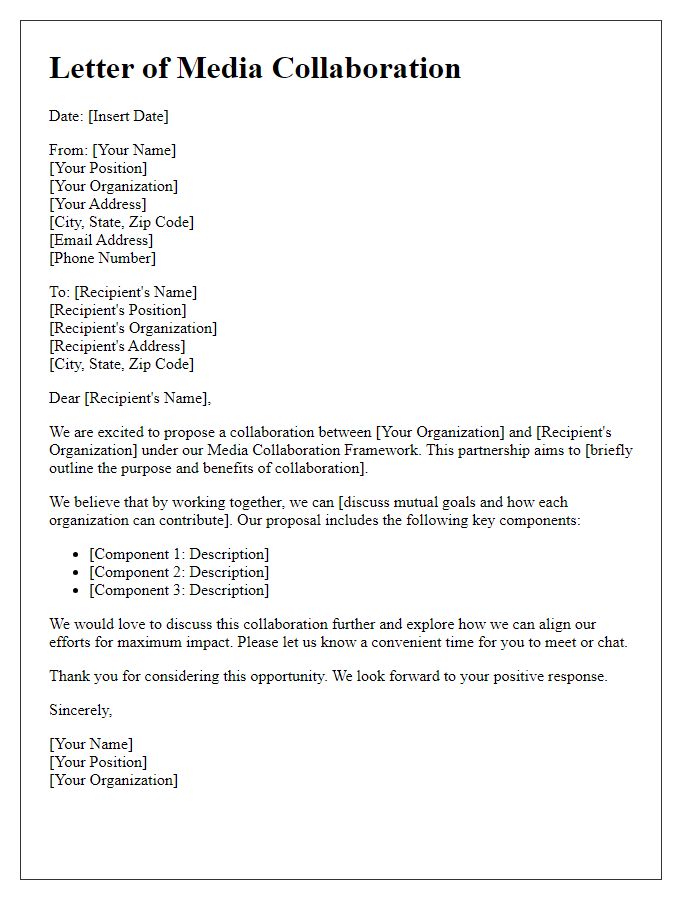
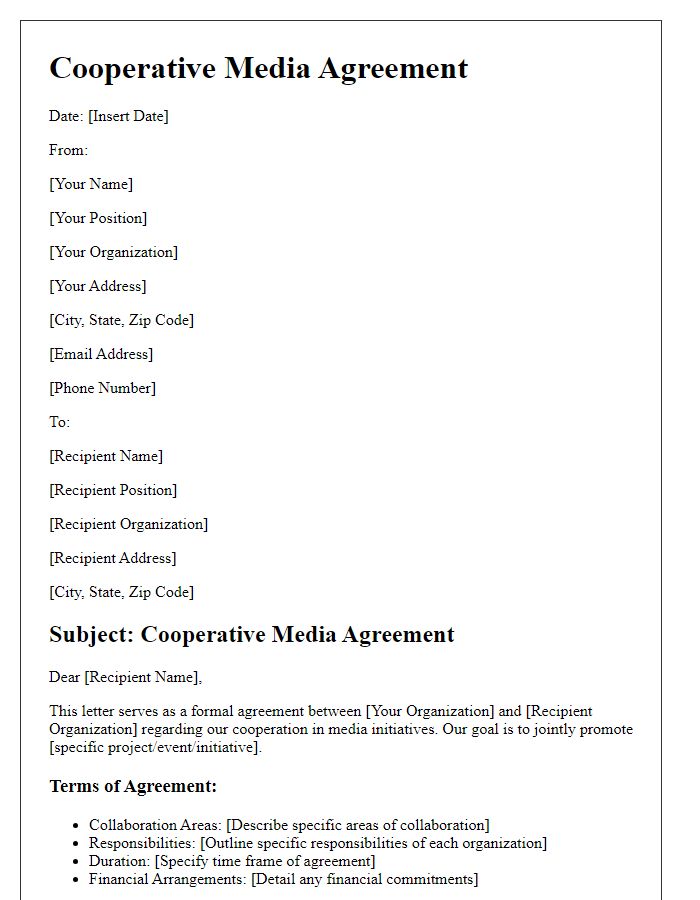
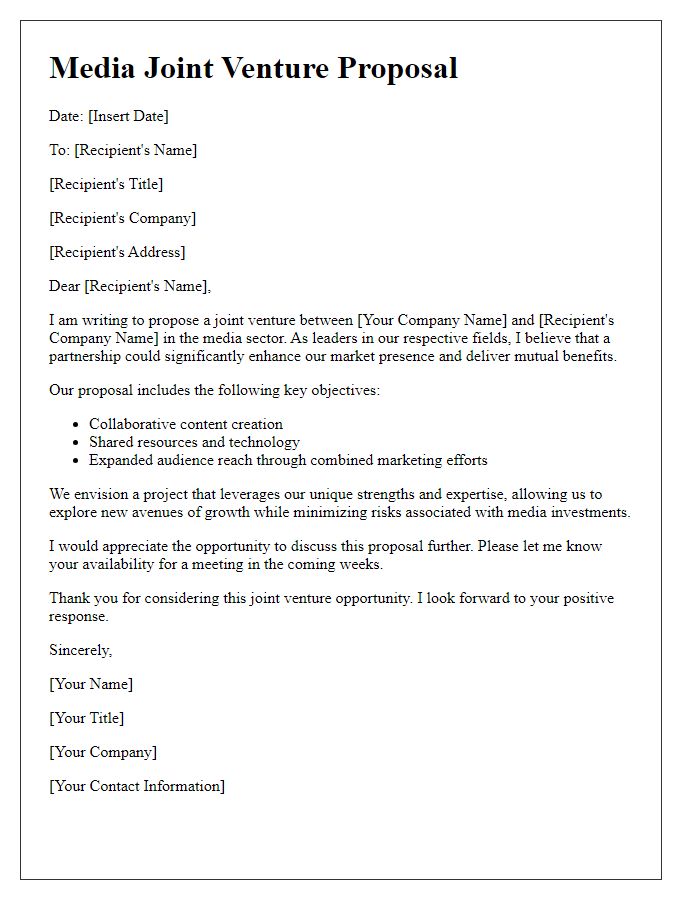
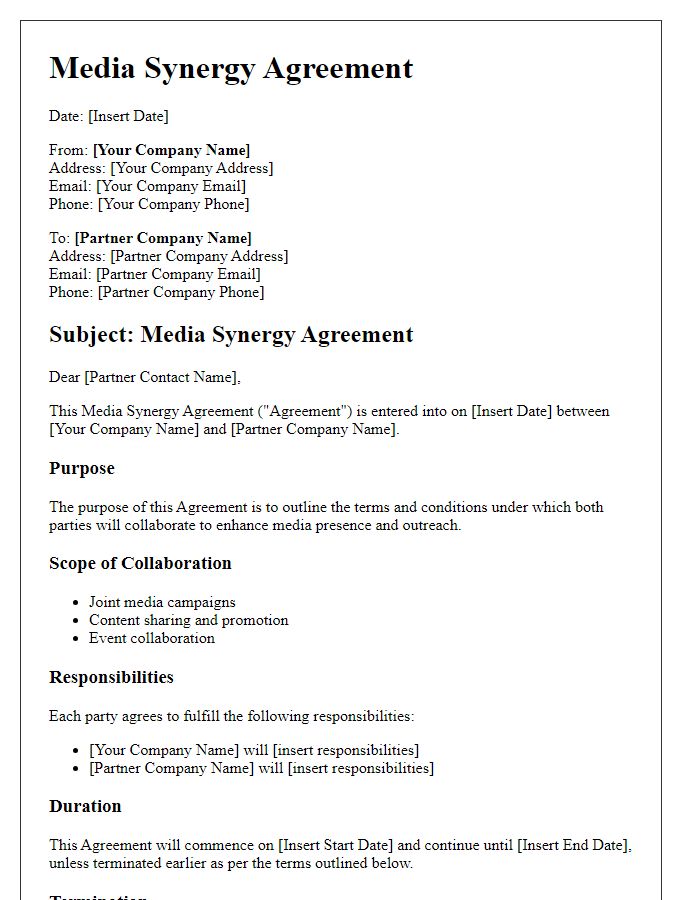
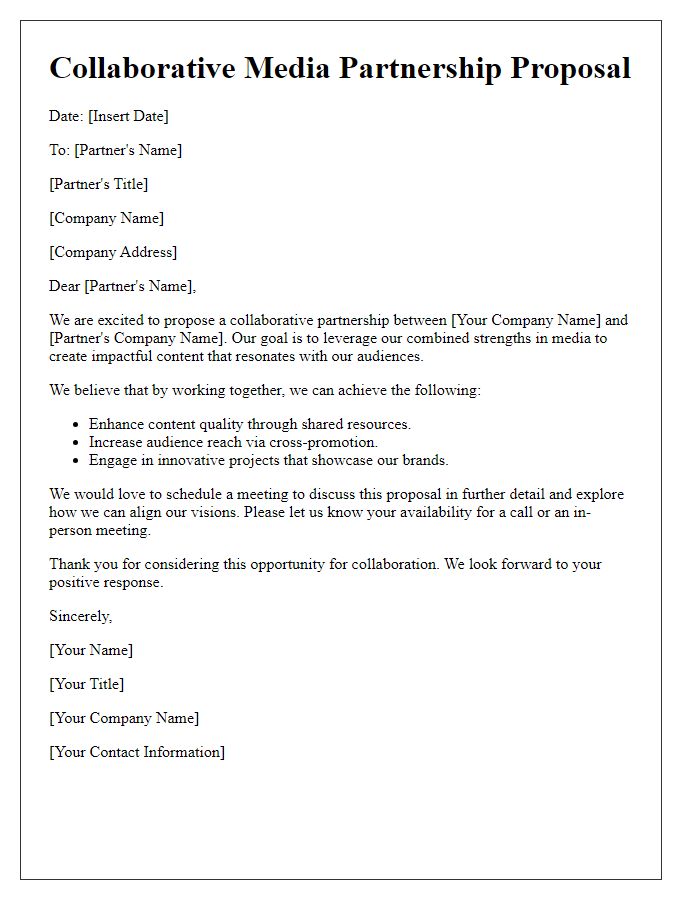
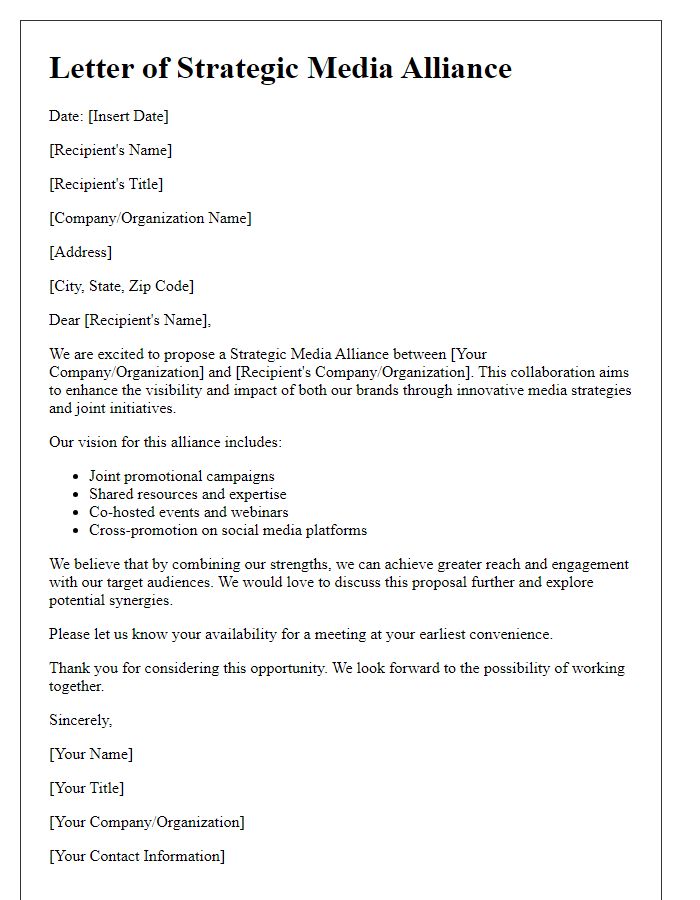
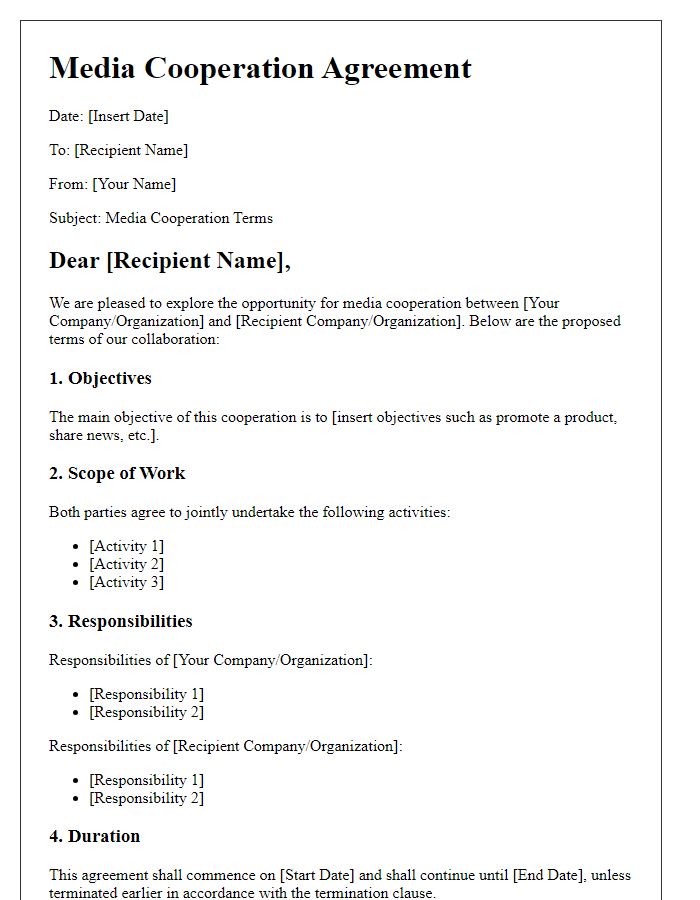
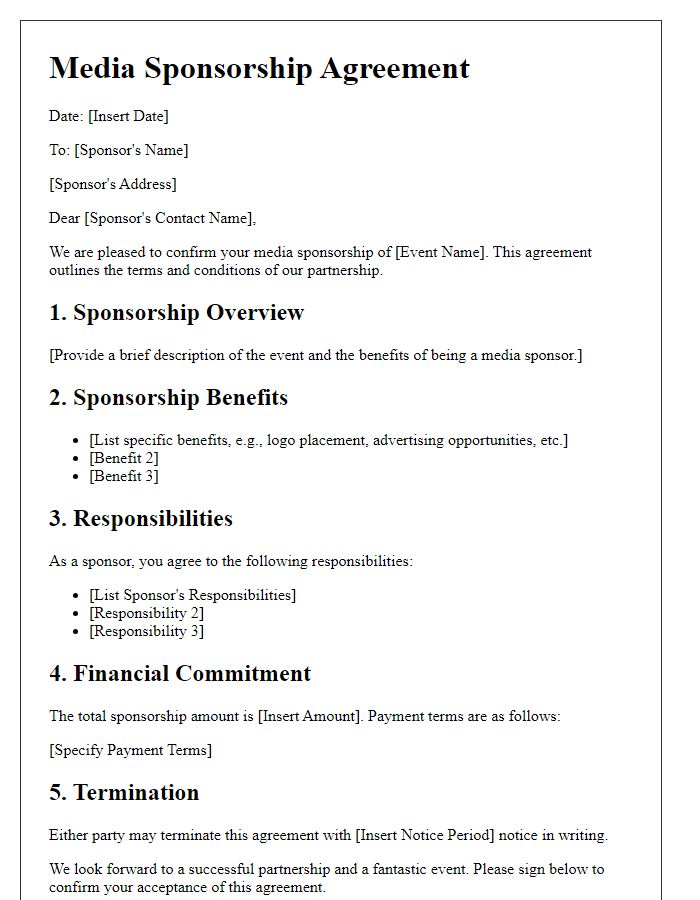
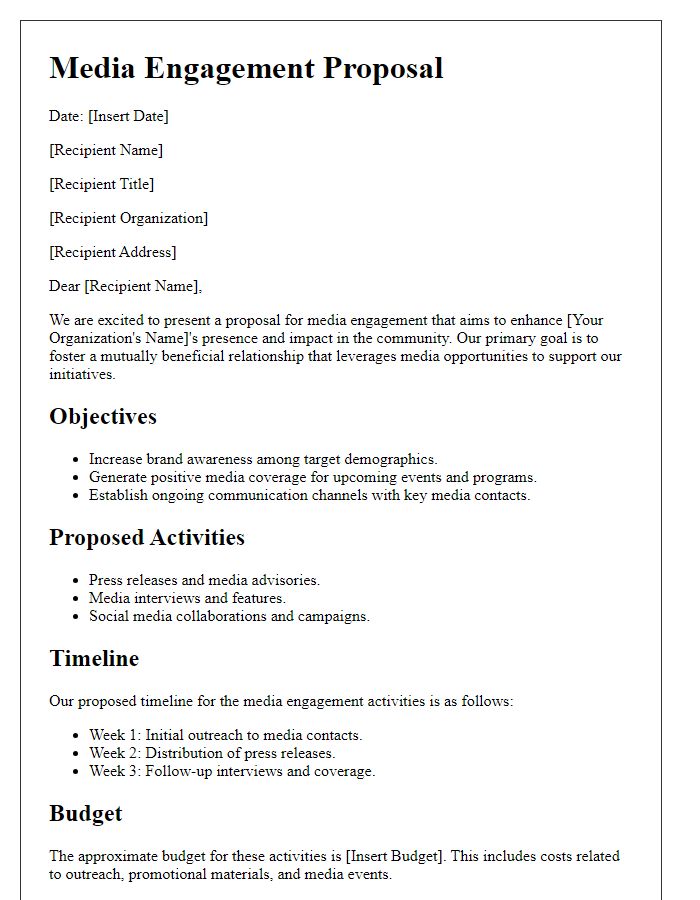


Comments